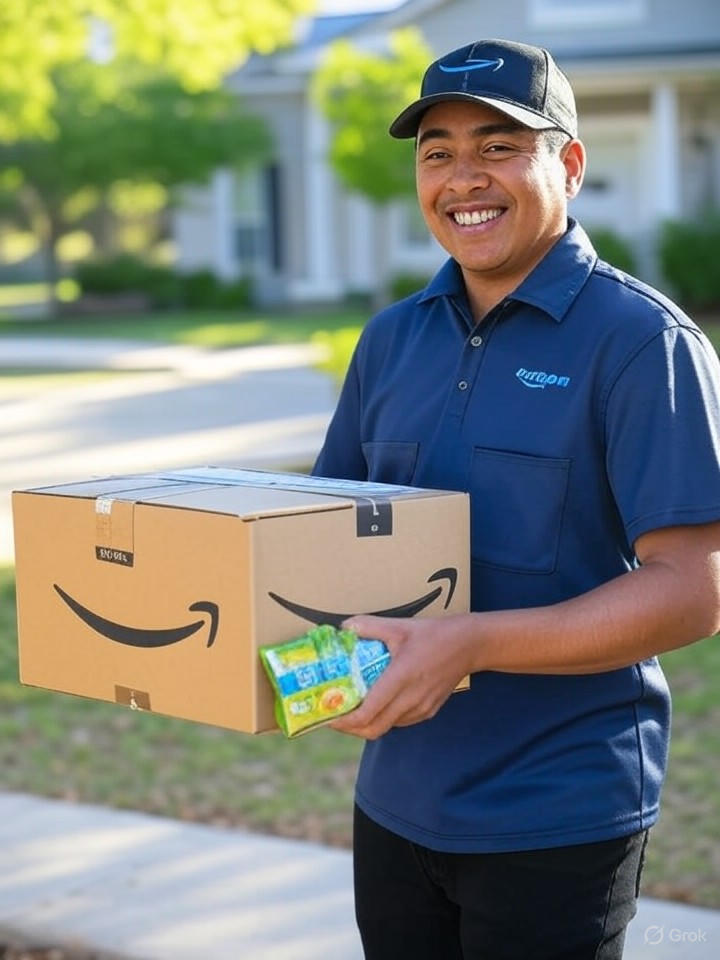Amazon’s latest push into the grocery sector marks a pivotal escalation in its battle for consumer dollars, integrating perishable items like fresh produce, dairy, and meats directly into its same-day delivery ecosystem. Announced on August 13, 2025, the expansion allows tens of millions of Prime members in over 1,000 U.S. cities and towns to bundle groceries with everyday Amazon purchases, all delivered free within hours for orders exceeding $25. This move leverages Amazon’s vast logistics network, optimized for speed, to handle temperature-sensitive goods without the need for separate shopping carts or delivery windows.
The service, which includes thousands of items from produce to frozen foods, represents a seamless fusion of Amazon’s e-commerce dominance with its physical retail assets, including Whole Foods Market. Industry observers note that this could redefine convenience, as Prime subscribers—numbering over 200 million globally—can now add blueberries to their order of batteries and expect everything at their door by evening. According to the official release on BusinessWire, Amazon plans to double its reach to at least 2,300 locations by year’s end, signaling aggressive investment in cold-chain infrastructure.
Strategic Implications for Retail Giants
This expansion isn’t just about convenience; it’s a calculated strike against rivals like Walmart and Instacart, who have long dominated quick grocery fulfillment. Amazon’s integration of perishables into its core same-day service undercuts competitors by eliminating friction—customers no longer toggle between apps or sites. Recent reports from Reuters highlight how this positions Amazon to capture a larger share of the $1 trillion U.S. grocery market, where online penetration has surged post-pandemic.
For industry insiders, the logistics feat is noteworthy. Amazon has retrofitted its fulfillment centers with advanced refrigeration and AI-driven routing to maintain product freshness, drawing on lessons from its acquisition of Whole Foods in 2017. This builds on earlier experiments, such as the 2019 rollout of free grocery delivery for Prime members, but scales it exponentially.
Competitive Pressures and Market Response
Traditional grocers are feeling the heat. As detailed in an AP News analysis, Amazon’s move pressures brick-and-mortar chains to accelerate their own digital transformations, potentially accelerating store closures or partnerships. Walmart, for instance, has countered with its own same-day options, but Amazon’s Prime ecosystem offers unmatched loyalty incentives.
On social platforms like X, sentiment among users reflects excitement mixed with caution. Posts from Amazon’s official account over the years tout ultrafast delivery perks, while recent customer interactions reveal teething issues like packaging concerns for perishables. Yet, the buzz underscores growing consumer demand for hybrid shopping experiences.
Future Outlook and Challenges Ahead
Looking ahead, Amazon’s grocery ambitions could extend beyond the U.S., with hints of international pilots in Europe and Asia. However, challenges loom: regulatory scrutiny over market dominance, as antitrust probes intensify, and supply chain vulnerabilities exposed by recent global disruptions. CNN Business reports suggest this expansion signals Amazon’s confidence in its post-Bezos era strategy under CEO Andy Jassy, focusing on high-margin services.
Insiders predict this could boost Prime retention rates, with groceries becoming a sticky feature that justifies the $139 annual fee. Yet, success hinges on execution—ensuring consistent quality for items like seafood or baked goods amid varying urban densities.
Economic Ripple Effects
The broader economic impact includes job creation in logistics and potential deflationary pressures on food prices through efficient distribution. As GeekWire notes, small suppliers might gain from Amazon’s platform, though concerns about vendor fees persist.
Ultimately, this expansion cements Amazon’s role as a retail innovator, blending online prowess with physical necessities in ways that could reshape daily consumer habits for years to come.




 WebProNews is an iEntry Publication
WebProNews is an iEntry Publication